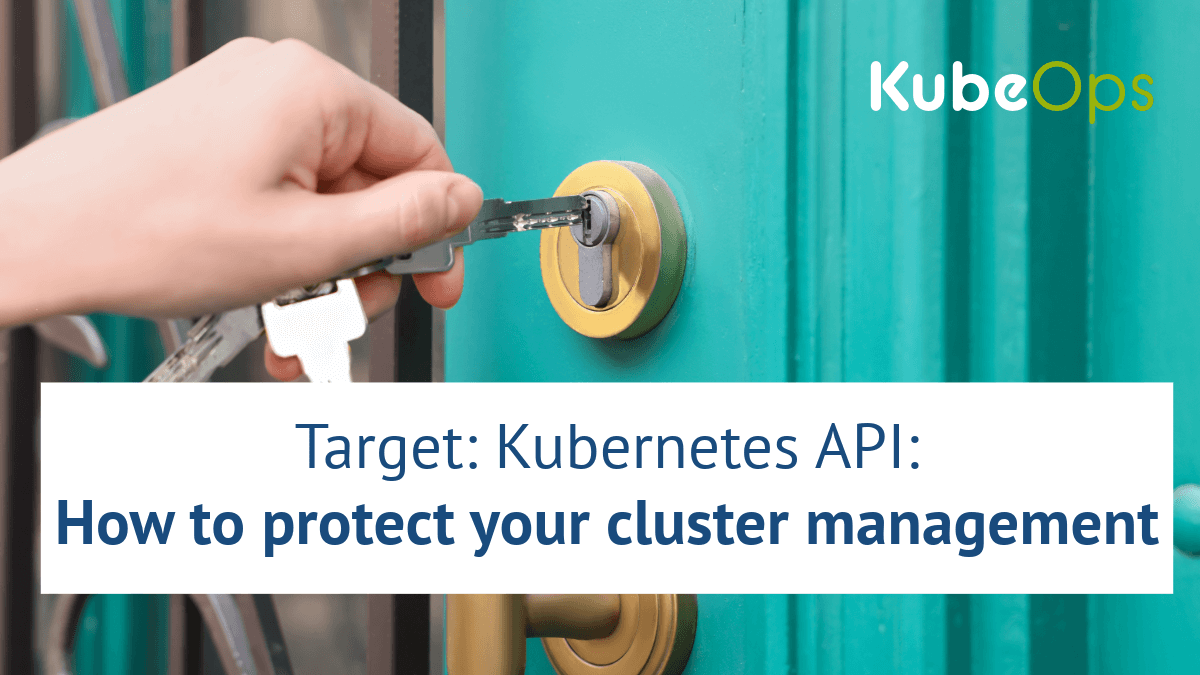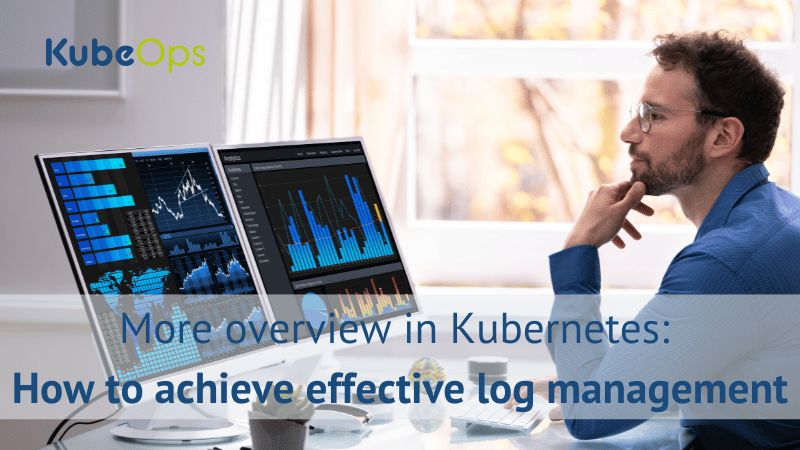Blogs
Target: Kubernetes API: How to protect your cluster management

The Kubernetes API is the core of any Kubernetes environment. As the central control plane for all cluster operations, it is a prime target for attacks. Without proper security measures, unauthorized users can make critical configuration changes or destabilize the cluster through excessive requests. It manages the entire cluster and allows administrators and applications to access resources. This central role makes it a critical security factor. An inadequately protected API server can encourage attack attempts and compromise sensitive data. In this article, we show how companies – particularly in the critical infrastructure (KRITIS) sector – can secure the Kubernetes API to meet compliance requirements and strengthen their IT security.
Why Is the Kubernetes API So Sensitive?
The Kubernetes API server is the sole interface for cluster management. It processes commands, checks permissions, and updates the cluster database. If it is not adequately secured, unauthorized access may occur, or attackers may generate high loads, disrupting operations.
Common Threats:
-
DDoS Attacks: Excessive requests can overload the API and bring down the cluster.
-
Unauthorized Access: Misconfigured authentication can allow attackers to access cluster resources.
-
Data Manipulation: Without audit mechanisms, unauthorized changes often go unnoticed.
Key Security Measures for the Kubernetes API Server
1. Rate Limiting for Load Control
Excessive requests to the API server can destabilize the cluster. Rate limiting defines how many requests a user or service can send per unit of time.
✅ Recommended Measures:
-
Configure API server flags
--max-requests-inflightand--max-mutating-requests-inflightto limit concurrent requests. -
Use a reverse proxy (e.g., NGINX) or a service mesh (e.g., Istio) for more granular access control.
2. Audit Logging for Tracking Changes
Every API request should be logged to track unauthorized access or misconfigurations.
✅ Recommended Measures:
-
Enable audit logging via
--audit-policy-fileand--audit-log-path. -
Integrate with SIEM solutions such as ELK Stack or Splunk for comprehensive analysis.
-
Log critical changes, especially to permissions and roles.
3. Using Admission Controllers as Security Filters
Admission controllers are plugins that inspect API requests before they are saved. They help prevent insecure configurations.
✅ Recommended Measures:
-
Enable important admission controllers via
--enable-admission-plugins. -
Use PodSecurityPolicies to enforce container standards (e.g., no root privileges).
-
Implement custom webhooks for specific security policies.
4. TLS Encryption for Secure Communication
All communication with the API server must be secured using TLS (Transport Layer Security) to prevent eavesdropping.
✅ Recommended Measures:
-
Ensure the API server only accepts HTTPS connections (
--tls-cert-file,--tls-private-key-file). -
Regular certificate rotation to minimize the risk of compromised keys.
-
Use a central Certificate Authority (CA) bundle for authentication (
--client-ca-file).
5. Enforcing Strong Authentication & Authorization
Granular access control is crucial to preventing unauthorized cluster access.
✅ Recommended Measures:
-
Enable user authentication (e.g., OIDC, OAuth2, or X.509 certificates).
-
Implement Role-Based Access Control (RBAC) to define precise access rights.
-
Restrict the network with Network Policies to prevent unauthorized API access within the cluster.
Conclusion: Multi-Layered Protection for the Kubernetes API
The Kubernetes API is the central nervous system of any cluster – and therefore a prime target for attacks. A multi-layered security concept incorporating rate limiting, audit logs, admission controllers, TLS encryption, and granular authentication mechanisms is essential to keeping the cluster secure and compliant with regulatory requirements.
For companies in critical infrastructure (KRITIS) or the public sector, this not only provides better protection against cyber threats but also ensures compliance with regulations such as NIS2 or BSI requirements.
Next Steps:
-
Assess existing Kubernetes API security mechanisms.
-
Implement access controls and audit logging.
-
Regularly update Kubernetes security policies.
With these measures, your Kubernetes environment will remain resilient and secure in the future.

